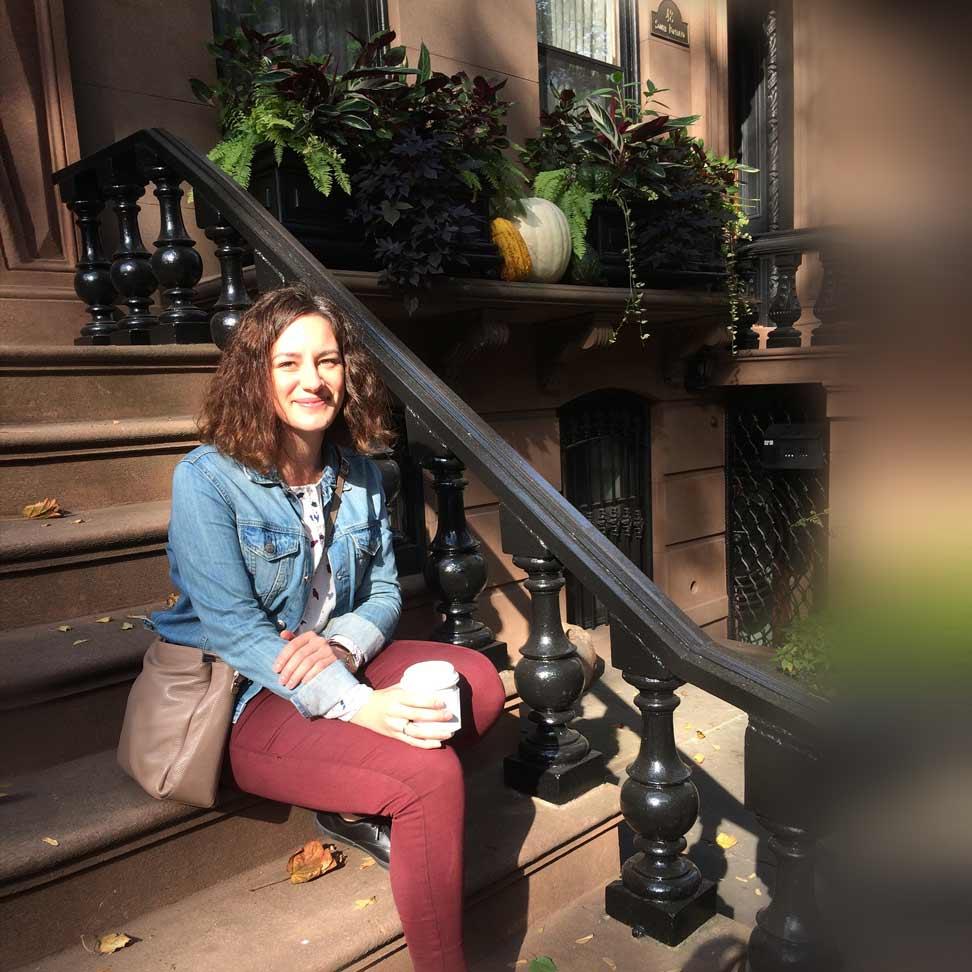Morocco entices all senses and will leave you dizzy and bewildered. Colors change as you pass through various landscapes: from the blue-grayish waters of the Atlantic to the sun-scorched yellow of the Sahara. Cities buzzing with the sounds of people converging in the busy medinas. The smell of spices and exotic dishes tempting you at every step.
We guide to the best experiences on a nationwide trip to Morocco: from coast towns to the hot desert and plenty of ancient cities in-between.
Around Marrakech
The Palmeraie oasis
Your trip to Morocco will most likely start in Marrakech. The city has plenty to offer, and with mountains, desert, and sea a stone’s throw away, there’s a lot to take on. Our city guide explores well-known cultural landmarks and takes you on a sensorial journey – think colorful spices, sweet delicacies, relaxing hammam experiences, and exotic landscapes.
Marrakech is known for its buzz and hubbub, and you’ll crave a bit of peace and quiet after some days here. Palm oasis Palmeraie, located at the northern edge of the city, is the physical expression of tranquillity. In-between thousands of date palms going back many centuries, green resorts provide the serenity necessary to recharge your batteries.
For golf aficionados, a stay at Palmeraie Palace (rates start at 806 MAD [$82] per room, per night) includes access to one of the city’s most beautiful courses boasting majestic views of the nearby Atlas Mountains.
Explore Morocco’s mountains
The Atlas Mountains tower over Marrakech
A couple of days in the palm oasis and you’re ready to get active. A 90-minute drive south of Marrakech lies North Africa’s greatest mountain range – the Atlas Mountains.
Inhabited by Berber populations, the mountain range is sprinkled with remote villages and hamlets, pinnacles popping here and there, and mountaineers slowly making their way through the passes. The landscape changes throughout the seasons: thick snow in wintertime, overflowing rivers during spring, fierce scorching sun throughout the summer months, and finally a vision of reds and browns in autumn.
You might be tempted to climb the highest peak of the range. Jebel Toubkal (13,670ft) can be reached from the small village Imlil located at the foot of the mountain. Once the snow melts, this trek is more of a walk than a climb, but it’s nonetheless not for unfit trekkers. Alternatively, hiking through the beautiful routes of Mizane Valley or Azzadene Valley will satisfy your craving for pristine nature.
Soak up the sun on Morocco’s coast
The traditional blue boats of Essaouira
More of a sea-and-coast dweller than a mountain climber? No worries, Morocco won’t disappoint. Just a three-hour drive west of Marrakech and you’ll find yourself breathing in the crisp air brought by the vents alizés (trade winds). In the city of Essaouira, the wind gets so wild that lying on the beach might prove a bit of a challenge, though it’s especially convenient if you’re here to ride the waves.
Stroll around town and discover art galleries, charming boutiques, and a gorgeous Unesco-listed medina featuring ramparts, a citadel, bastions, and narrow streets lined with multiple vendors. Don’t miss out on Essaouira’s lively port where traditional blue fishing boats bring in the catch of the day.
24 hours in Agafay Desert
Quad biking in the Agafay Desert
With a desert not even an hour away from Marrakech, you’ll have no excuse but to venture out in the blistering sun.
There are various ways to explore the stone desert of Agafay: from an authentic nomad tent, camel trekking, or quad biking your way through the stony landscape. This is not your classical desert; there are no undulating sand dunes, but an expansive, barren-looking, flat stony landscape. Though in close proximity to Marrakech, it feels remote. Once night falls, the sky is flooded with millions of stars, each outshining the other.
Spend a night glamping in Scarabeo Camp (rates start at 2,334 MAD [$278] per night, per tent) where romantic dinners under the starry sky, yoga classes, and stargazing are just some of the activities on the menu.
Highlights of the north
Tangier and Chefchaouen
The Sidi Bou Abib Mosque in Tangier’s Grand Socco square
Tangier, located at the northern tip of the country, just below the Strait of Gibraltar, has for many centuries been a European gateway to Africa. At its peak, Tangier was as important as London and New York: during the 1920s it was an international zone governed by a joint convention. During this period the city flourished and attracted a plethora of eccentrics, artists, international spies, and millionaires.
Nowadays, the city is experiencing a renaissance. Investment is pouring into the city – a new marina is under way and cultural landmarks such as Librairie des Colonnes, a bookshop often visited by famous writers, and the 1930s-era Cinema Rif have been restored to their glory days.
A two-hour drive south of Tangier lies one of Morocco’s most recognisable cities – Chefchaouen, the Blue City. The city is known for its blue-washed buildings, and with the Rif Mountains peaking above the city, it creates an otherworldly landscape. Though much smaller than Tangier, Chefchaouen is rich in its offerings: a vibrant cafe culture, unique local handicrafts, and proximity to tranquil green areas.
Ancient city of Fez
The leather tanneries of Fez use the same centuries-old dyeing method
Fez is a place of many facets: Morocco’s second largest city, home to oldest continually-operating university in the world, an ancient hub for scholars and allegedly the largest car-free urban area. It’s a city you’ll either fall in love with or one that will overwhelm you entirely.
In the narrow streets of the ancient medina, you’ll experience life in its rawest form: children roaming around, donkeys carrying various items (remember, there are no cars around), locals going about their work in the city’s famous outdoor tanneries, street sellers peddling their wares – everything from ceramics and rugs to sugary mint tea and exotic dishes such as snail soup, aubergine fritters, and spicy sardines.
Volubilis and Moulay Idriss
The triumphal arch of Volubilis glowing in the sun
The year is AD45; the Romans annex Volubilis to the Empire thus making it the most remote and far-flung outpost. The outstanding archaeological site tells the story of the Roman occupation that lasted around 200 years. Notable buildings such as the basilica, triumphal arch, mosaic decorated mansions, and even a hammam reflect the city’s wealth and strong stand as a provincial capital. Built on some of North Africa’s most fertile land, the city successfully exported wheat and olive oil, and even wild animals for Roman games across the Empire.
A mere 10-minute ride from Volubilis lies a tiny, yet historically important town: Moulay Idriss. Also known as the holy town of Moulay Idriss, this is where Moulay Idriss I arrived in 789, bringing with him the religion of Islam to Morocco. The Mausoleum of Idriss I is now a sacred destination open only to Muslims. As a matter of fact, the entire town was off limits for overnighting non-Muslims until 2005.
Casablanca
The courtyard of the magnificent Hassan II Mosque
Made famous by the fictional love story between Rick Blaine and Ilsa Lund in the film of the same name, the real Casablanca is surprisingly not a very romantic city; the film wasn’t even filmed on location. The city doesn’t attract the same numbers of visitors like Marrakech or Tangier, and those who visit come here to experience Morocco like a local. If you’re traveling for the architecture, a stop here is a must. From art deco to traditional Moroccan and modern design, Casablanca is the place to set your inner architecture nerd free. Some of the highlights include the Hassan II Mosque, the largest mosque in Morocco, the palm-lined Boulevard Mohammed V, a testament to the French influence on the city, the art deco gem Cinéma Rialto, and Mahkama du Pacha, a parliamentary building beautifully showcasing Moroccan design.
Highlights of the south
Ouarzazate and Ait-Ben-Haddou
Moroccan earthen clay architecture in Ait-Ben-Haddou
A four-hour drive south from Marrakech, Ouarzazate might not look as impressive as anything you’ve seen so far. Yet this small town managed to keep itself at the center of trade and more recently became a hotspot for movie productions.
Located strategically on a rocky plateau south of the High Atlas Mountains with the vast Sahara Desert peeking from the southern corner, this small town is where people from adjacent valleys came together to trade with each other. In more recent times, Ouarzazate established itself as a film production location. With movies such as Babel, Gladiator, and Lawrence of Arabia being shot here, this small town attracts plenty of curious visitors who go on studio tours here.
The nearby fortified village Ait-Ben-Haddou boasts exquisite examples of Moroccan earthen clay architecture. The dark red dwellings, named collectively a ksar, earned the village a place on Unesco’s coveted World Heritage List.
Hiking through the Todgha Gorge
A Berber village in the Todgha Gorge
Leave the movie sets behind and take the road east towards the town of Tinghir. From here you can explore the spectacular Todgha Gorge, a 980-feet deep canyon. The road towards the gorge takes you through a green oasis of palm trees and tiny villages. 9 miles into the walk, high walls of fiery red limestone close in around you. Carved by the Todgha and neighbouring Dades Rivers, only a tranquil stream of clear water travels through the gorge.
The hike is not particularly difficult, so no professional hiking gear is necessary, just a pair of comfortable shoes and plenty of water. The best time for exploration is in the early morning when the first light of the sun envelops the gorge in a golden embrace.
Camel rides in the Sahara
Sunset in the Sahara
Coast, mountains, valleys, ancient cities … Morocco has it all. No visit to this magnificent country is complete without a trip to Sahara. The world’s largest hot desert, Sahara spreads across much of North Africa – from the Red Sea in the east to the Atlantic Ocean in the west.
One of the most accessible routes is via Merzouga, a small village in the south-east close to the Algerian border. Hop on a camel that will take you through the sand dunes of Erg Chebbi. You’ll arrive at the 490-feet high sand dunes just in time for the sunset. Spend the night in a nomad tent under the starry night. What better end to your holiday!


